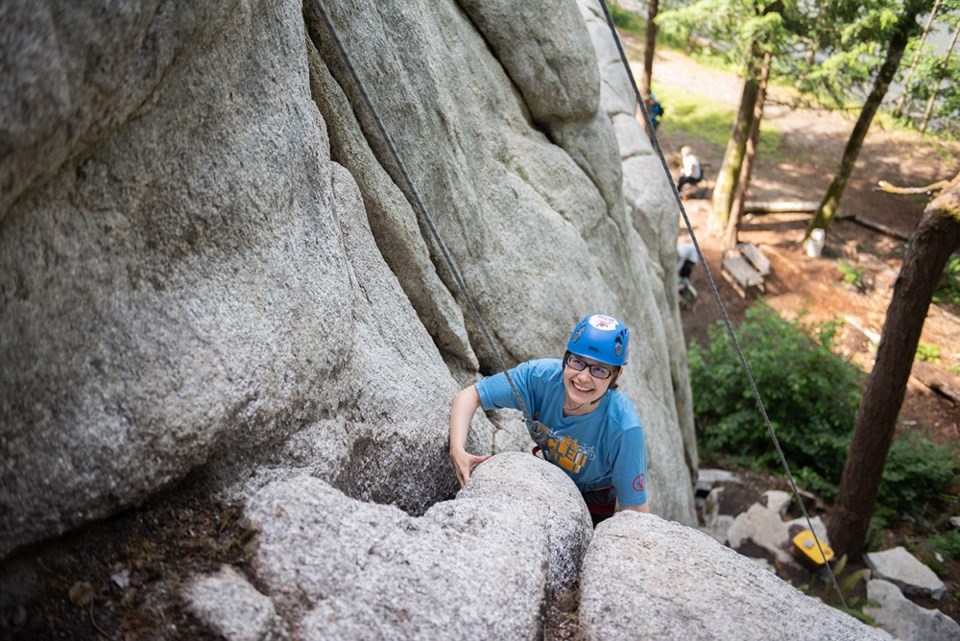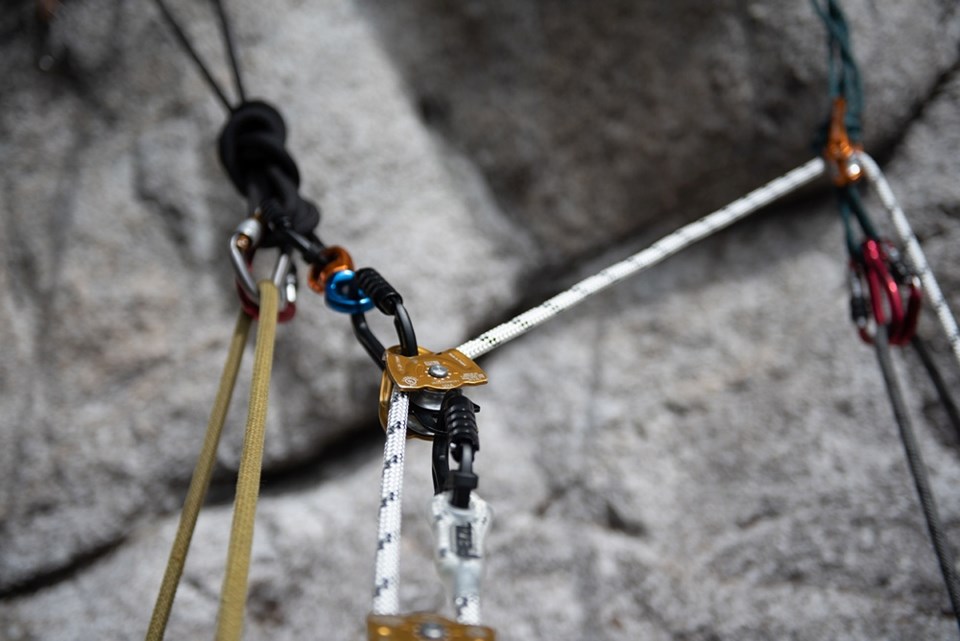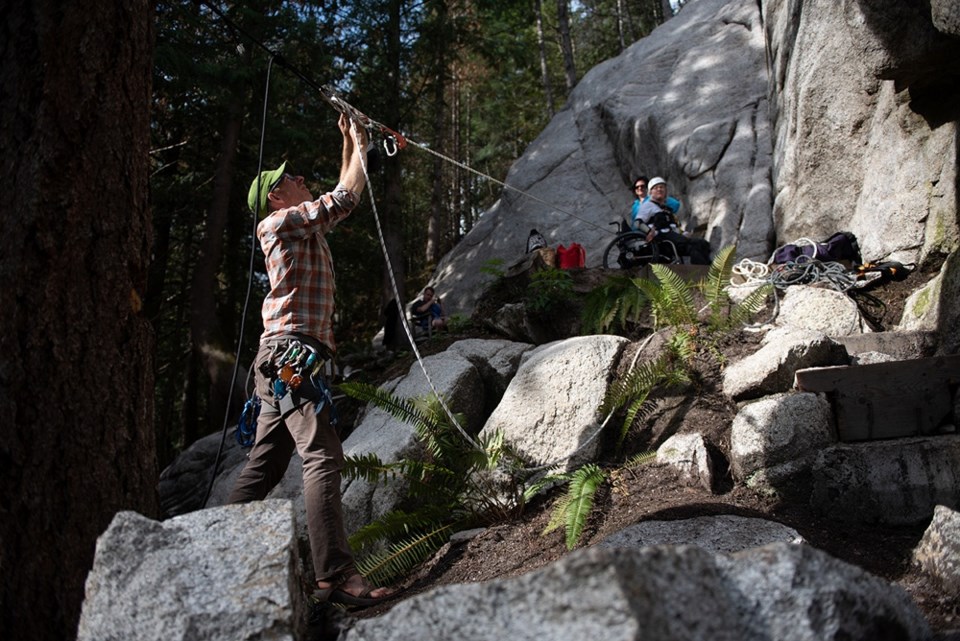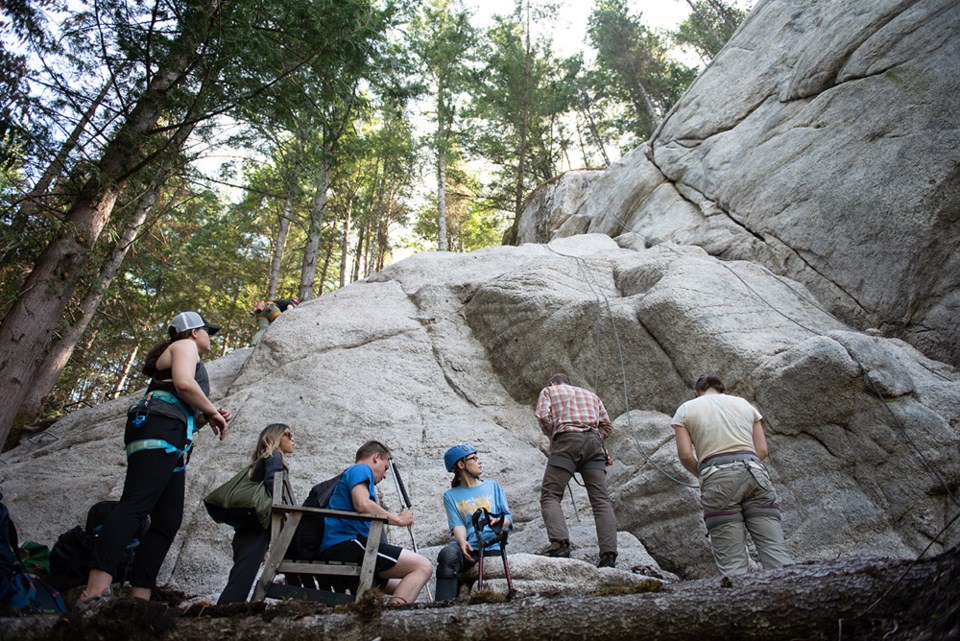Wayne Willoughby lives for the long days.
Spending 22 hours climbing upwards while fighting a virus that attacks muscle strength, followed by a few hours of rest hundreds of metres up in a dirt cave, is a special kind of long day.
Two decades after he made the first adaptive ascent of the Stawamus Chief, the accomplished big wall climber and polio survivor took on the first recorded one-day ascent of a hard aid-climbing route up the Sheriffs Badge last month.
The Seattle-based climber scaled the rock monolith with Kieran Brownie and Luke Cormier with a finish time of 21 hours and 55 minutes.
"I'm so lucky I got to do these climbs — some that really inspire people," he said.
Willoughby hopes that one day, the Chief — with easily accessible approaches and a friendly climate — could become a mecca for adaptive climbers living with disabilities.

Far below, things are already taking shape. Squamish is ground zero for the Canadian Adaptive Climbing Society, a non-profit trying to make both indoor gyms and outdoor crags accessible for those who face barriers.
"Right now, and hopefully this is changing, for the most part when someone rolls into a climbing gym, many gyms are just not prepared," said society founder Brent Goodman.
"We want to make sure that gyms have the training and they have the tools to say yes, instead of saying no," he said.
Adaptive climbing is not a new concept.
Willoughby has been ascending big walls since the 1970s. Amputee athletes shine in film festivals, and para-athletes attract sponsorship in competitions across the U.S. and Europe.
But when Goodman, who has a background in adaptive outdoor recreation, began organizing in Victoria to introduce the sport to newcomers in the gym, he was surprised by how little knowledge there was. Everything was trial and error.
"There really wasn't much in terms of ‘Here's how you do it.' Nothing was really published," he said.
One huge advantage that makes climbing easier for many with disabilities, explains Goodman, is that it doesn't rely on speed or lateral movement. Every climber naturally adapts to his or her own strengths and weaknesses — from height to muscle mass.
For those facing additional barriers, physical or mental, the trick is finding a strategy that works while still feeling authentic.
At Squamish's Smoke Bluffs on a July weekend, a small group of adaptive climbers and friends have joined Goodman to figure it out.
For Georgina Hackett, a Vancouverite who has been climbing for a year and lives with cerebral palsy, the problem-solving starts before getting to the wall. Even on a fairly well groomed and low-grade trail, a power wheelchair won't make it to this crag.
A manual wheelchair can get her to the rock, where she faces the same mental challenge as any other climber: how to use her body, her balance, and her strength to go upwards.

Cerebral palsy impacts muscle tone and co-ordination, both important factors in climbing.
"It's about figuring that out," she explained. "I don't bend the same way as other people, for example. It's this crazy kind of puzzle solving everyone else would do, and then a whole layer on top of how to do that with the way my body moves."
Another piece of the puzzle is set up above her where Goodman has rigged up a rope system with pulleys and a counterweight. Her full body harness takes some of Hackett's weight off as she climbs to better even out gravity with her strength.
"I think [the creativity] is rewarding, the personality type I am... is to figure things out," she said. "So even climbing the wall, it's ‘How is this going to work?' I need to leverage what I know I can do, and how do I experiment just a little bit to learn something new at the same time."
Hackett has a younger sister who climbs, so part of the appeal in climbing was that they could enjoy the activity together.
Goodman has been building the Canadian Adaptive Climbing Society for over two years, offering climbing sessions but also training workshops and educational seminars, including demos at the Arc'teryx Climbing Academy in Squamish and adaptive nights at Vancouver gyms.
Adaptive climbing is a broad term that encompasses a huge range of different abilities and needs — someone with one leg, for example, will take a different approach than a climber with Multiple Sclerosis.
It goes without saying that fully blind climber Donovan Tildesley, who feels drawn to the top of the Chief like anyone else in town, isn't chasing the views.
A former Paralympic swimmer, Tildesley's style on the rock is naturally more touch-based. He also relies on more beta instruction and advice for handholds and footholds from his belayer at the base of the rock.
"A sport like climbing is a real confidence builder for certain people, especially people with disabilities, a lot of them need that feeling of empowerment," said Tildesley.
Like any other climber, Tildesley was drawn to the physical and social nature of the sport.
"It's a real combination — a physical and mental challenge. You have to be mentally tough I think to stay on that rock, and the stamina to stay on it when it gets challenging," he said. "For guys like me, who are a bit of an adrenaline junkie and a bit of an adventurer, it's just something to say, ‘This is something else that I can do.'"
For many who try the sport, with disabilities or otherwise, climbing is a casual activity to share with friends. Goodman wants to make sure that the rewards of climbing aren't out of reach for people who might benefit.
For a dedicated athlete like Willoughby, focusing on big vertical goals has also been a way to persevere through injuries, the discipline of a mandatory health routine, or the frustrations of ableism.
"So many adaptive climbers have very serious issues to face, and not just in terms of physical limitations," he said. "Adaptive climbing can help people. We are what we experience."
Now in his 60s and still going strong, his experiences include memories in some of the most beautiful places on earth.
In his over 40 big wall climbs — including speed records and first adaptive ascents — Willoughby recalls moonrises over the desert in Zion, all four seasons in Yosemite, and a first look at the Chief when the Sea to Sky was barely a highway.
His first ascents will be a part of climbing history, and his friendships across the community run deep.
"When I get to the top of a big wall, I know I've done something that was worth all the effort that it took," he said. "Sometimes when you are most challenged is when you need to dig down the deepest. That's when you find out what you are really capable of. That is what climbing really is for everyone."




